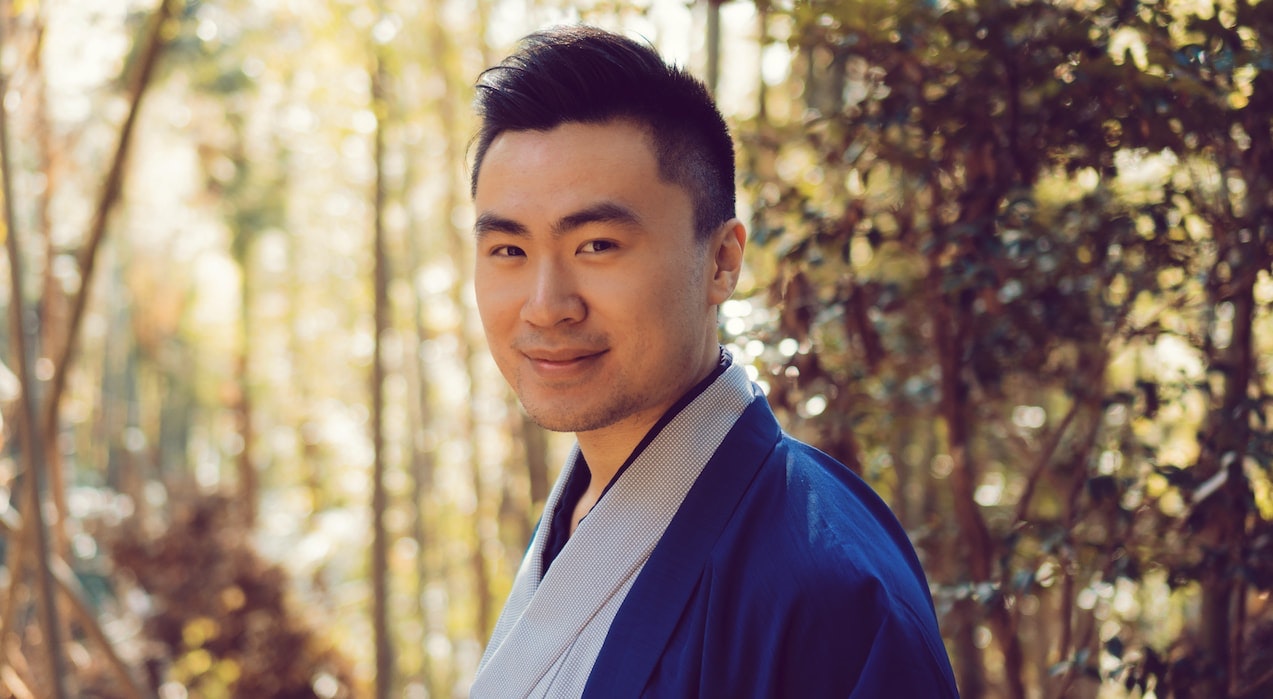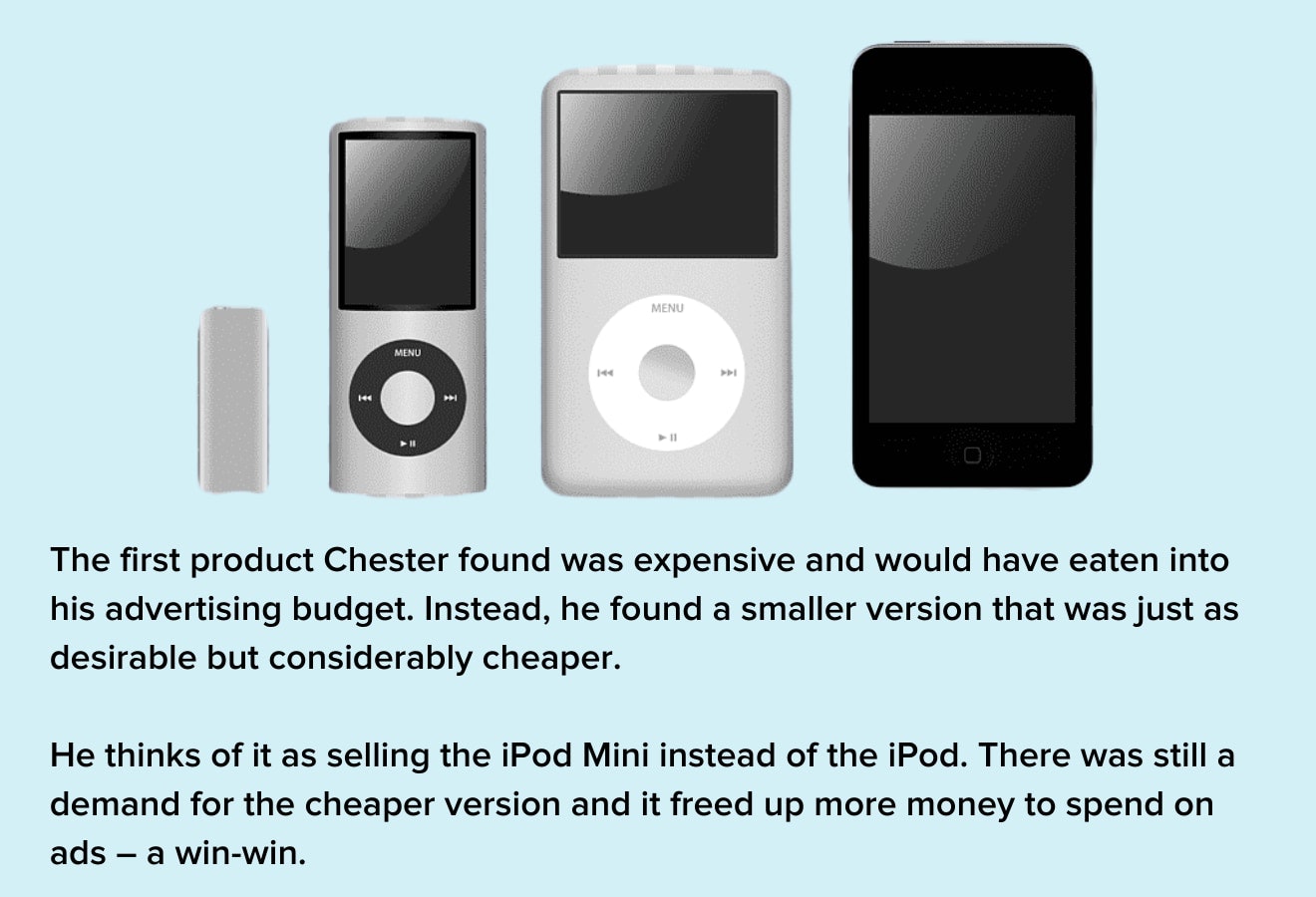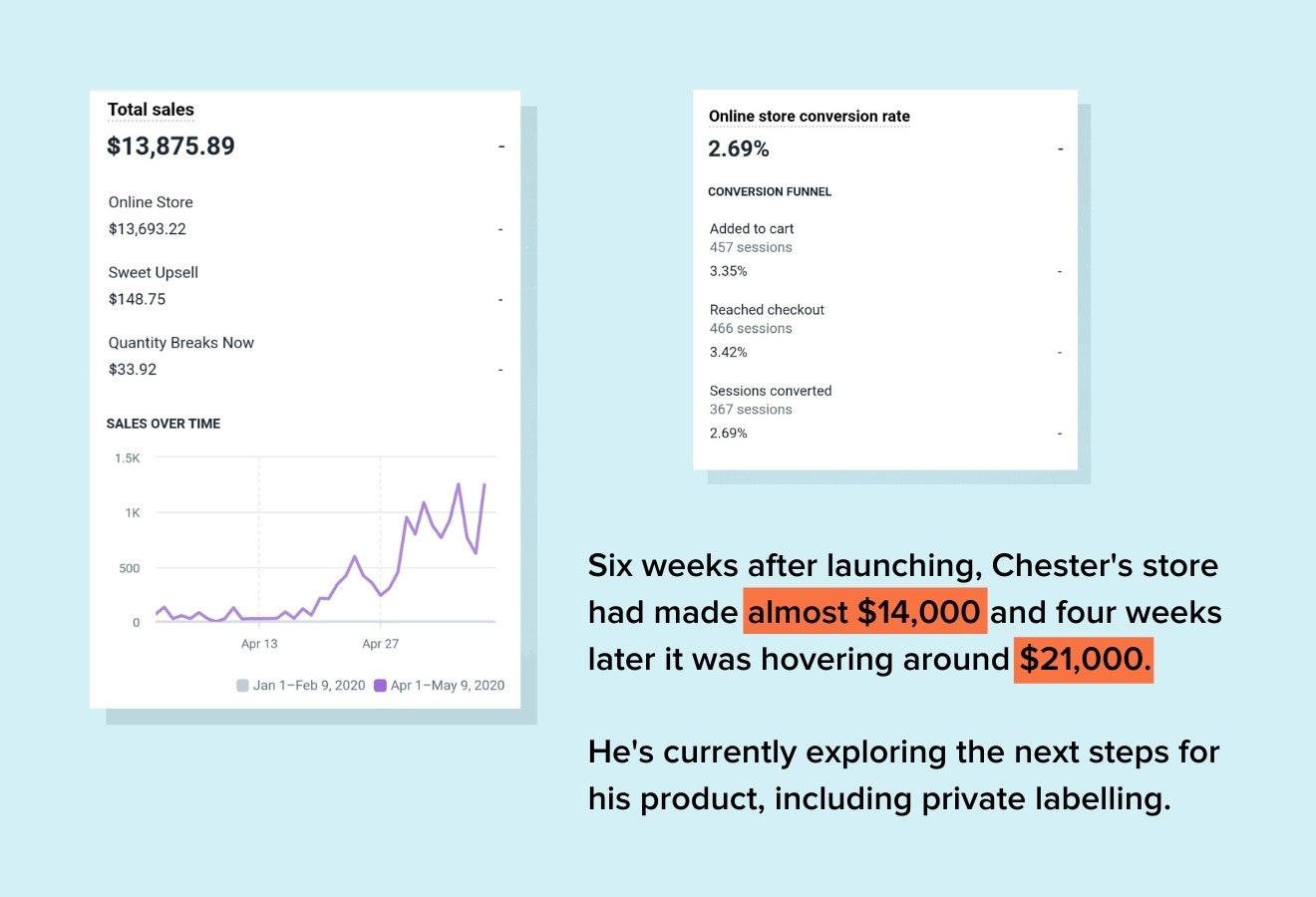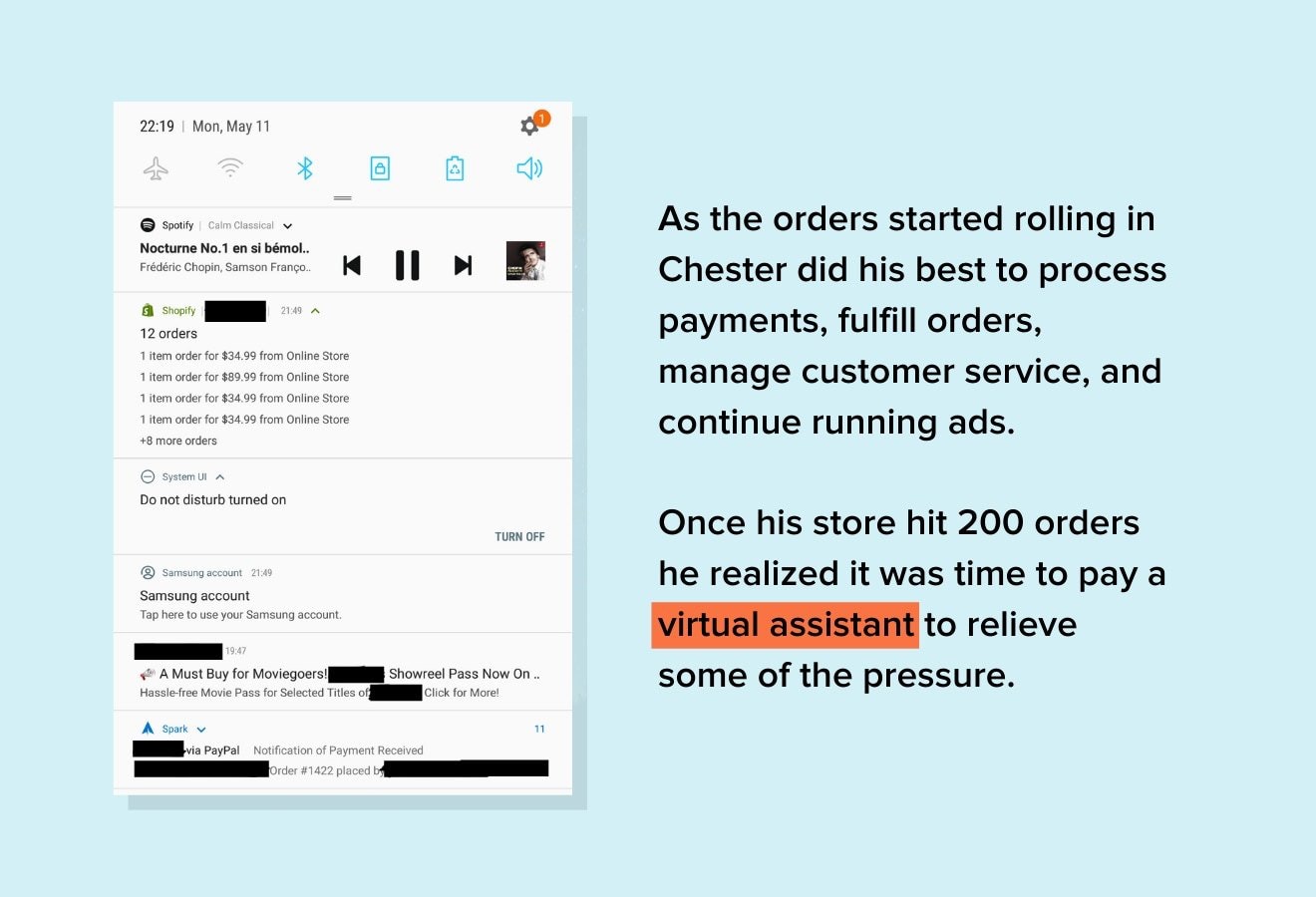At just 24-years-old, Chester Lee has already been hustling for most of his life.
At eight, he started designing websites. By the time he was 12, he was earning money doing graphic design and video editing for businesses.
But as Chester entered college, he put his creative interests to the side. And, eager to pick a path he thought would set him up for life, he began studying to become a doctor.
After years of hard work, Chester graduated from medical school. He was 22-years-old and felt on top of the world. Free from homework and classes, he wanted nothing more than a vacation at the beach before starting a grueling program working long hours as a junior doctor in a hospital.
But soon after he arrived on the island of Siargao in the Philippines, Chester was involved in a major traffic accident.
Recovering from the accident, Chester found himself reevaluating the direction of his life. And ultimately, it inspired him tostart a side projectso successful that it opened up a whole new world of opportunities in a matter of weeks.
Speaking to me from his home in Hong Kong, Chester took some time out from working as a doctor and running his new business to discuss how he came to open his online store. He explained how he managed to grow it quickly (despite a worldwide pandemic), his approach to picking a winning product, and the one thing that he thinks more entrepreneurs should invest more in.
Post Contents
- A Wake-Up Call After Graduation
- Climbing the Wrong Ladder
- A One-Product Store for a Less Premium Product
- Using Good Design to Win Over Customers
- Learning and Perfecting Facebook Ads
- Scaling and Encountering Problems
- Running into Supplier Issues
- Plans for the Future
- Inspiring Others to Avoid Analysis Paralysis
- Want to Learn More?



A Wake-Up Call After Graduation

After speaking with Chester for just a few minutes, it’s clear the 24-year-old is one seriously driven guy. And, while he’s managing a new side project – an online store created amid the COVID-19 pandemic – this is far from his first creative undertaking.
→ Click Here to Launch Your Online Business with Shopify
“When I was a kid, I always had a lot of different creative aspirations. I started my first comic book store when I was six. I did my own web design when I was eight. And I did professional graphic design and video editing when I was at the age of 12.”
Using skills he developed watching hours of YouTube tutorials, Chester made money throughout his teenage years as a graphic designer. But, despite his undeniable passion for creative endeavors, he chose to study medicine at university.
It was after years of study that a newly-graduated Chester traveled to the Philippines to unwind before starting his career. But, before any relaxing could begin, Chester was involved in a serious crash.
“On our first day, I rented a motorcycle and just rode along the coastline. And feeling the summer breeze hit my face – it was really blissful. But unfortunately, a passer-by just came out of nowhere, and the moment I saw him, I immediately reacted and steered my motorcycle to the left.”
“My life just flashed before my eyes. My skin scraped along the sidewalk – all over my face and my upper and lower limbs. And my motorcycle, because of the velocity, just ended up hitting the other person.”
While Chester was lucky to escape with scrapes and wounds – his scars are still visible a year later – the other man involved in the crash was paralyzed from the waist down. As Chester returned home to recover, the severity of the accident weighed heavily on him.
“This entire incident made me really evaluate my own life decisions. And I realized how fleeting life really was, and it could pass any moment in time. That could have been me. And so, as I returned home and started working as a doctor, I started seeing the world a little differently.”
Climbing the Wrong Ladder

The time spent recovering from injuries also became time Chester spent reassessing everything in his life. After dedicating himself to medical school for so long, he realized that maybe it wasn’t what he was supposed to do.
“Some days, I would look in the mirror, and I wouldn’t even recognize who I was looking at. Even though my physical wounds have slowly begun to heal, the person that I was looking at was like a complete stranger to me. I was like the kid that gave up on his creative dreams to enter medical school, to enter the education system. And ultimately, I was a ghost who sold his soul to the rat race. And while I was battling that at night, during the day, I still had to go to work, which was a 100-hour workweek.”
Chester’s job was extremely demanding. As a junior doctor, he found the work environment toxic. Any mistake he made was held against him, while any time he did something right, someone else further up the food chain would take credit.
“My breaking point came when I realized that, did I really spend all these years climbing up the ladder, studying so hard, just to realize that this ladder was actually pointed up against the wrong wall?”
Acknowledging that something had to change, he began searching for ways tomake money onlineand quickly found ecommerce. Realizing this was something that would combine his creative interests and more, he was hooked.
A One-Product Store for a Less Premium Product
After consuming as many YouTube videos and articles on ecommerce as he could, Chester felt ready to start his first store.
By this stage, it was late-March 2020, and the world was well and truly in thegrips of a pandemic.However, due to Hong Kong’s strict lockdown rules, Chester’s hospital admitted far fewer patients than usual. Never one to let an opportunity pass, Chester signed up for Shopify’s free trial and used the downtime at work to build aone-product storein a day.
Chester chose to build his store around a product from the wellness niche. He had an interesting approach to picking his item, opting for something that was a less expensive, less feature-heavy version of a product he’d originally come across. Chester explained his product choice using the iPod and the iPod Mini as stand-ins for the items.
“我的第一个产品是像iPod。的一个verage order value of that product was around $79-89. Because as a beginner, I was just getting started with Facebook ads, I didn’t have a lot of money to spend. I realized early on that in order to make this work, I would have to spend a lot of money on ads and in order to accumulate enough data, but that exceeded my budget. So I [thought] instead of selling the iPod, maybe I’ll sell the iPod Mini, which is what I did. And with the iPod Mini, the cost of goods was $2, but I wasselling it at $34.99.”

Using Good Design to Win Over Customers
Chester’s goal was to create a clean,professional one-product store.根据他的设计背景,他小心翼翼地branded his homepage, used well-designed images, and just the right amount of text to persuade visitors to buy. His homepage explained who needs his product, what the product does, where it can be used, and promoted the store’s 30-day money-back guarantee in less than 200 words. By the time a customer has finished reading the brief amount of text on the homepage, they should have little reason not to purchase.
Chester’s store has a simple navigation menu at the top of the page. Meanwhile, he filled the Footer menu with links and information that makes his store look established and trustworthy. This includes customer service hours and information links to his store’s terms of service and return and refund policy. He also included links tothe store About Us pageand reviews of the product.
With his store set up, he then moved on to designing creatives for Facebook ads. Having honed hisvideo editingskills over the years, Chester felt confident that he could put together a solid ad. He found stock footage online and made a series of ads with various scroll stoppers – footage that would stop potential customers as they browsed their feed and make them want to watch more.
Learning and Perfecting Facebook Ads
From there, the next step was the painful part – spending money to test the ads. Chester had never usedFacebook adsbefore, so the whole process was a big learning curve.
“我学到的最大的教训之一actually is that you don’t know what the market really wants until you test it. What I thought was the best ad – I mean, I spent three hours on this ad – ended up flopping. What ended up like a 10-15 minute impulsive decision ended up winning. And you really don’t know until you test it.“
Chester spent his first few days testing to find both winning creatives and interests. Once he found his winning creative, he moved all his attention to finding interests that worked. Later, after hisPixel had enough data, he could move onto lookalike audiences, starting with 95 percent video views, then add-to-carts, initiate checkout, and purchase events.
With the cost of his product so low, Chester had more money to pump into ads after supplier cost and payment fees. With cash to spend, Chester’s store was profitable on day three or four.
That’s right, Chester launched a store in the middle of a pandemic and was turning a profit just days later.
Scaling and Encountering Problems
After hisfirst few sales, Chester didn’t waste any time and quickly moved onto scaling his store. He was thriving and found himself fascinated by every step of running an online business. He threw more money into winning ad sets, managed customer relations, and processed orders as quickly as possible.

As the money came in, he couldn’t help but measure his success against what he and his colleagues were earning. Pretty soon, it was clear that ecommerce was the winner.
“For the first six weeks, I was already making more in one day than what took me six years of medical school to learn how to make. By the end of the eighth week, I was already making more than some of the senior doctors that bossed me around in the hospital. And by the tenth week, I was actually making more than every single nurse on my hospital floor, combined. And that really made me realize the massive potential of ecommerce that I never knew existed.”
By the time I spoke to Chester in mid-June, his store had made over $21,000 in sales. With with his cost of goods sold sitting around $6,000, this left Chester with an impressive $15,000, before accounting for Facebook ads.
But nothing is without its challenges. As Chester’s store gained more customers, he realized he needed to expand his operations and build a robust network to stay successful.
Running into Supplier Issues

At first, Chester managed the store on his own. But 200 orders later, it was clear he needed to delegate some of the work. Thankfully, he was able to find a virtual assistant to manage customer service and the day-to-day back-end work. This freed up Chester to focus on ads and other issues – such as problems with suppliers.
“I think the biggest obstacle that I’ve encountered during dropshipping is actually dealing with suppliers. And I’ve actually gone through three suppliers.”
Knowing thata good supplierwas vital to a successful dropshipping store, Chester wanted to find one he could trust. Unfortunately, his first supplier had long shipping times and even used fake tracking numbers for orders. When some packages never made it to his customers, Chester had to pay refunds. While he was still working with this supplier, Chester used a fulfillment agent, but he found he was being overcharged and that, along with long shipping times, led him to find a new supplier.
Unfortunately, his second supplier was also problematic. This one also used fake tracking information and sent items with packaging and instructions that didn’t inspire much trust.
After two bad suppliers, Chester knew he needed to find someone he could establish a good working relationship with. Luckily, he eventually found one with the help of a friend he’d made on an ecommerce Facebook group.
Chester’s third supplier offered reasonable shipping times and quality products and packaging. After all the time spent dealing with poor suppliers, he finally feels like he’s found someone he can rely on – and even work on future products with.
Plans for the Future

With his product selling well, Chester’s already moving his store to the next level.
With the help of his current supplier, Chester’s been able to private label his product. This gives his item a more exclusive feel, setting it apart from any competitors. Chester’s hoping it will lift his store from a basic dropshipping store to an established brand. He’s currently waiting to see how customers will react to the new-look products.
On top of running the store, Chester’s also returned to his design roots. After seeing how customers responded to his well-designed ads and landing pages, he wants to help others learn about design and editing – specifically concentrating on design for ecommerce.
“我认为我最大的秘密武器实际上是design of the store. I think most people underestimate good design. Every dropshipping course or ecommerce store course out there teaches you, ‘Oh, what is the best ads strategy? Oh, how do you scale lookalike audiences?’ But unless you have eye-catching ads and beautiful landing pages, you’re going to encounter a lot of the Facebook ads inconsistencies. Even if you had the best ad strategy, without a good creative or a good landing page, your customers aren’t going to convert.”
To help spread the word of good design, Chester recentlylaunched a design course.He already has a handful of students and has plans to expand it in the future. His ultimate goal is to give entrepreneurs the tools they need to build a long-term, sustainable business.
Inspiring Others to Avoid Analysis Paralysis
Considering Chester didn’t even have a store back in March, it’s crazy to see where the 24-year-old is now. As he explains, he’d held himself back for years. Now he’s finally pouring all the energy and excitement into his projects. Now, he’s eager to adviseaspiring entrepreneursto take the plunge as soon as possible and avoid his error.
“I knew about ecommerce for years, but I never really took the plunge because of certain limiting beliefs that I had. And it’s very easy to fall into the trap of watching a lot of content, but then getting overwhelmed by all this information – sometimes misinformation – and you get stuck in analysis paralysis. What I’ve later found out was that the best thing you can do is to do it yourself. Find out what works, and then double down on what works. And once you get started, once you get the ball rolling, all those limiting beliefs just kinda evaporate.”



